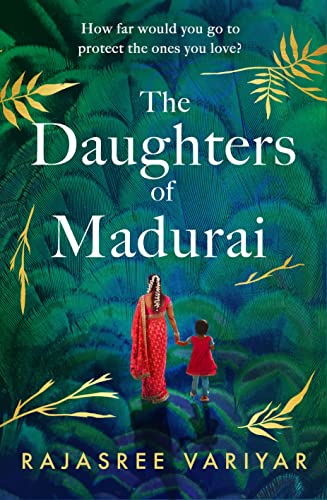
Image credit: Goodreads.com
Abortion zealots who also support the killing of newborn girls (infanticide) will censor this novel for its life-affirming message, so read it now.
Variyar has written a well-developed narrative of an Indian mother’s effort to save her newborn daughter from being killed for the “crime” of being born a female. While the pro-life world knew about female infanticide in India for decades, this novel may shock ignorant American readers (I know, I know…that’s a redundancy) and should help feminists (the genuine ones, that is, which means pro-life feminists) advocate for the lives of their newborn sisters as much as they fight for the lives of their unborn sisters in danger of being killed by abortion.
The structure of Variyar’s novel is especially interesting for its inclusion of fetological facts preceding key chapters, which function not only as guides for the development of the infanticide narrative, but also as teaching tools for readers who are ignorant of the development of an unborn child. This is especially important in today’s culture when high school and college students are indoctrinated by leftist and woke ideas about unborn life instead of being taught subjects they should know, like grammar or Chemistry.
The combined fetological notations are, thus, an education in the life of an unborn child:
Chapter 6: “The first month / Now her mouth, lower jaw, blood cells, and circulation develop. / She is the size of a grain of rice” [61].
Chapter 7: “The second month / Now her heart has formed. Fingers and toes webbed like a frog’s. / The sketch of features—eyes, ears, mouth, nose. / She is the size of a gooseberry” [76].
Chapter 9: “The third month / Now her tail has disappeared. / Her fingers and toes have lost their webbing and gained their nails. / She is plum-size” [106].
Chapter 11: “The fourth month / Now her face moves, smiles, frowns. / She hears the sound of her mother’s heartbeat” [133].
Chapter 12: “The end of the fourth month / There are nails on her tiny fingers and toes. / Her teeth and bones are strengthening. / She is the size of a mango” [152].
Chapter 13: “The fifth month / The skin on her fingertips swirl into prints. / She begins to move her limbs. Her mother feels her flutter” [166].
Chapter 15: “The sixth month / Now she hears the lullaby her mother sings to her sister. / It soothes her. She has hair and lashes of white. / Her skin is flushed pomegranate-red” [198].
Chapter 16: “The seventh month / Now she twists and turns in her mother’s womb. / Her tiny fists open and close at the sound of her mother’s voice. / Her heartbeat calms” [215].
Chapter 17: “The eighth month / Now her eyes can focus. Her wrinkles are smoothing over her baby fat. / She is the size of a cabbage” [225].
Chapter 19: “The end of the ninth month / Now she is chubby with fat, and her bones have hardened. / Her home is too small for her, holding her close and warm. / She reaches for the world’s embrace” [248].
For committing the crime of humanizing the unborn child, Variyar’s novel will certainly be condemned by abortion zealots and their fellow gang members, those who support infanticide, the killing of newborns. It behooves the rest of us who are civil rights activists and pro-life readers (same thing) to enjoy her work.
Of course, the novel is more than a transcription of fetological facts about an unborn child’s development. It is a frightening study of the depths which humans reach when they devalue the lives of fellow human beings.
Pro-lifers, of course, know that the devaluation of human life occurs, first, linguistically when any stage of human life is reduced to animal or non-human imagery. Thus, a pro-life reader would know that the grandmother who calls Janani’s newborn girl “The useless thing” (5) and, later, urges her to “‘get rid of it’” (113) practices standard dehumanization before a human life is killed.
Since there is such a thing as post-abortion syndrome (PAS), the novel includes several passages which illustrate what could be labeled post-infanticide syndrome (PIS, an unfortunate acronym which could distract from the seriousness of the matter). For example, Janani speculates that “In this quietness, she felt as though she could feel spirits lingering, hear little feet on the hard dirt” [19] and that, of her two daughters who were killed, “What would the other two look like now, if they had been allowed to live?” (21). Her post-infanticide speculation is not merely a one-time event, for it continues throughout the novel. Janani imagines “two other little bodies beside this one”, her living daughter’s body (62). Janani reflects that “Her second girl, Lavanika’s first little sister, would be about the same age” (70).
Besides anti-life language used to dehumanize the unborn and newborn child, the novel illustrates the dehumanizing effect of the absence of heterosexual marriage, especially as understood in the Jewish and Christian West (remember that the setting for the novel is Hindu India). Janani’s husband, for example, does not respect either himself or his wife when he has sex with a whore.
The distortion of the heterosexual union by a life-denying philosophy affects more than the husband and wife, of course. It is shameful that Janani’s mother-in-law speaks thus about the Indian government’s effort to save newborn baby girls from infanticide by offering “baby cradles” (comparable to safe-baby schemes in the United States) for the peasants: “Can you imagine the shame? Not being able to decide the fate of your own child? Giving it up, just like that. They won’t be able to hold their heads up” (75). This character certainly does not fit the stereotypical grandmother, a loving older woman, ready to bake cookies for her grandbabies when they visit Grandma. She’s a killer. Only in a culture which thinks infanticide is the norm would an effort to save newborn babies from being abandoned or killed be shameful.
If only India would someday convert to Christianity en masse not only to protect unborn and newborn lives, but also to secure the self-respect which should obtain between men and women.
Some final reductionist paragraphs from the main character may be a sufficient first step in India’s move from a life-denying philosophy to a life-affirming one. Nila interjects a couple of paragraphs about “the millions of girls who are missing from India’s population. Girls smothered and poisoned and drowned and buried alive. Girls that never emerge from their mother’s wombs” (323-4).
One flaw in the narrative is the inclusion of an unnecessary lesbian relationship. While one may presume that the lesbianism was forced on the author because that’s what publishers expect under the politically incorrect regime of the LGBTQ distortion of sexuality, there is truly no need for the narrator Nila to develop a lesbian relationship with a woman named Iphigenia. It would be interesting to speculate that the lesbian relationship that the narrator values is a direct effect of the distortion of how a heterosexual marriage should be lived, but studying or justifying the intrusion of an LGBTQ element must be relegated to future research by an enterprising young student of literature for a woke professor’s literature class.
